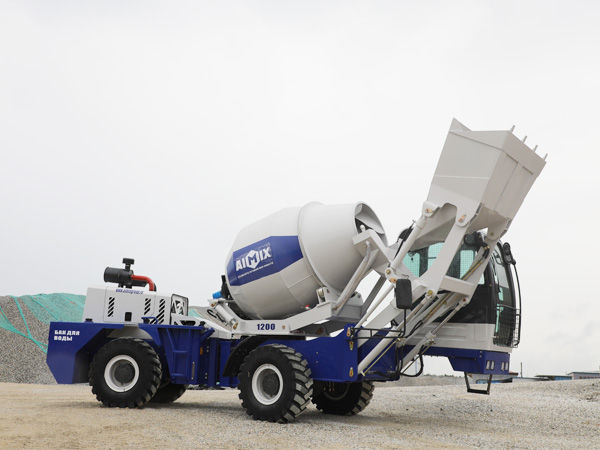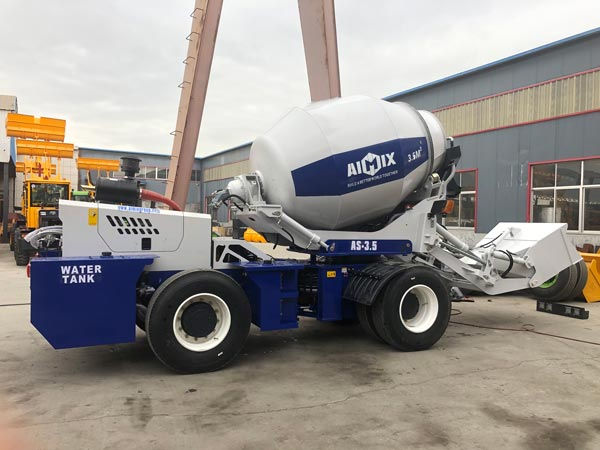Common Models and Capacities of Concrete Self-Loading Mixers
- aimixglobal2024
- 2024年11月5日
- 讀畢需時 3 分鐘
Concrete self-loading mixers have become indispensable in the construction industry. These machines combine multiple functions, making them highly efficient. This blog will explore common models and capacities of concrete self-loading mixers, providing valuable insights for customers.

Understanding Concrete Self-Loading Mixers
Concrete self-loading mixers are versatile machines that load, mix, and transport concrete. They come in various models and capacities, designed to meet different project requirements. Understanding these models and capacities helps in selecting the right self-loading mixer for your needs.
Common Models of Concrete Self-Loading Mixers
Several models of concrete self-loading mixers are available, each with unique features. These models include the AS-1.2, AS-2.6, AS-3.5, and AS-4.0. Let's explore these models in detail.
AS-1.2 Model
The AS-1.2 model is compact and efficient. It is ideal for small to medium-sized projects. Its compact size allows easy maneuverability in tight spaces. The AS-1.2 model offers a capacity of 1.2 cubic meters, making it suitable for residential and small commercial projects.
AS-2.6 Model
The AS-2.6 model offers a higher capacity and enhanced features. It is designed for medium-sized projects. This model provides a capacity of 2.6 cubic meters. The AS-2.6 is perfect for small infrastructure projects and larger residential constructions.
AS-3.5 Model
The AS-3.5 model is one of the most popular self-loading mixers. It offers a balance of capacity and efficiency. This model provides a capacity of 3.5 cubic meters. The AS-3.5 is versatile and suitable for a wide range of construction projects, from commercial buildings to infrastructure development.
AS-4.0 Model
The AS-4.0 model is designed for larger projects. It offers a higher capacity and advanced features. This model provides a capacity of 4.0 cubic meters. The AS-4.0 is ideal for large-scale construction and infrastructure projects, ensuring efficient and timely completion.

Capacities of Concrete Self-Loading Mixers
Concrete self-loading mixers come in various capacities, ranging from 1.2 cubic meters to 4.0 cubic meters. Selecting the right capacity depends on the project requirements. Understanding the capacities helps in choosing the most suitable mixer for your needs.
1.2 Cubic Meters Capacity
This capacity is ideal for small projects. It is suitable for residential and small commercial constructions. The compact size allows easy maneuverability in tight spaces. This capacity ensures efficient and timely completion of smaller projects.
2.6 Cubic Meters Capacity
This capacity is suitable for medium-sized projects. It offers a balance of efficiency and capacity. This capacity is ideal for small infrastructure projects and larger residential constructions. It ensures consistent and high-quality concrete production.
3.5 Cubic Meters Capacity
This capacity is versatile and popular. It is suitable for a wide range of construction projects. This capacity ensures efficient and timely completion of commercial buildings and infrastructure development. It offers a balance of capacity and efficiency.
4.0 Cubic Meters Capacity
This capacity is designed for large projects. It is ideal for large-scale construction and infrastructure projects. This capacity ensures efficient and high-quality concrete production. It offers advanced features and higher capacity for demanding projects.
Factors to Consider When Choosing a Mixer
Several factors should be considered when choosing a concrete self-loading mixer. These include project size, site conditions, and budget. Understanding these factors helps in making an informed decision.
Project Size
The size of the project determines the required mixer capacity. Small projects may require a 1.2 cubic meters capacity. Medium-sized projects may need a 2.6 cubic meters capacity. Large projects may require a 3.5 or 4.0 cubic meters capacity.
Site Conditions
Site conditions influence the choice of the mixer model. Tight spaces may require a compact model like the AS-1.2. Challenging terrains may need a robust model like the AS-4.0. Consider the site conditions when selecting a mixer.
Budget
Budget is an important factor in choosing a mixer. Smaller models like the AS-1.2 are more affordable. Larger models like the AS-4.0 offer advanced features but may be more expensive. Balance the budget with the project requirements for the best choice.
Conclusion
Concrete self-loading mixers come in various models and capacities, each designed to meet different project needs. Understanding common models like the AS-1.2, AS-2.6, AS-3.5, and AS-4.0 helps in selecting the right mixer. Considering factors like project size, site conditions, and budget ensures an informed decision.




留言